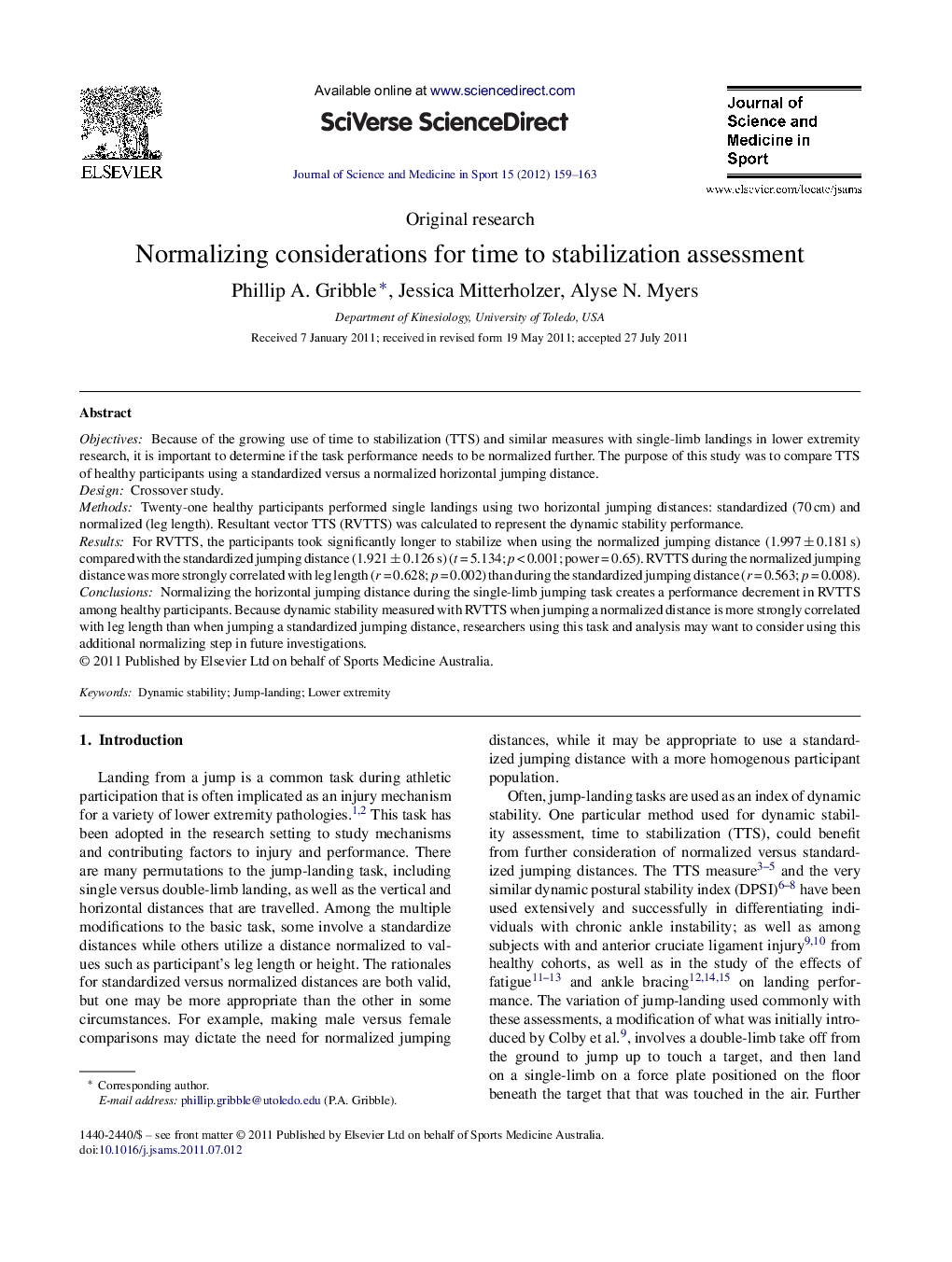| Article ID | Journal | Published Year | Pages | File Type |
|---|---|---|---|---|
| 2704666 | Journal of Science and Medicine in Sport | 2012 | 5 Pages |
ObjectivesBecause of the growing use of time to stabilization (TTS) and similar measures with single-limb landings in lower extremity research, it is important to determine if the task performance needs to be normalized further. The purpose of this study was to compare TTS of healthy participants using a standardized versus a normalized horizontal jumping distance.DesignCrossover study.MethodsTwenty-one healthy participants performed single landings using two horizontal jumping distances: standardized (70 cm) and normalized (leg length). Resultant vector TTS (RVTTS) was calculated to represent the dynamic stability performance.ResultsFor RVTTS, the participants took significantly longer to stabilize when using the normalized jumping distance (1.997 ± 0.181 s) compared with the standardized jumping distance (1.921 ± 0.126 s) (t = 5.134; p < 0.001; power = 0.65). RVTTS during the normalized jumping distance was more strongly correlated with leg length (r = 0.628; p = 0.002) than during the standardized jumping distance (r = 0.563; p = 0.008).ConclusionsNormalizing the horizontal jumping distance during the single-limb jumping task creates a performance decrement in RVTTS among healthy participants. Because dynamic stability measured with RVTTS when jumping a normalized distance is more strongly correlated with leg length than when jumping a standardized jumping distance, researchers using this task and analysis may want to consider using this additional normalizing step in future investigations.
